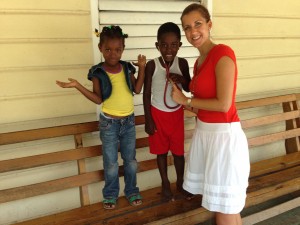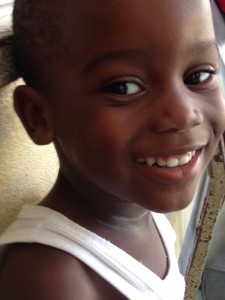
October 21, 2014 05:01 ET
Issa Trust Foundation Joins the National #GivingTuesday Movement to Encourage Spending With a Purpose: Enriching Lives in Jamaica
DAVIE, FL–(Marketwired – Oct 21, 2014) – The Issa Trust Foundation has joined #GivingTuesday, a first of its kind effort that will harness the collective power of a unique blend of partners — charities, families, businesses and individuals — to transform how people think about, talk about and participate in the giving season. Taking place December 2, 2014 — the Tuesday after Thanksgiving — #GivingTuesday will harness the power of social media to create a national moment around the holidays dedicated to giving, similar to how Black Friday and Cyber Monday have become days that are, today, synonymous with holiday shopping.
This year, the Issa Trust Foundation will encourage supporters to participate in a series of ongoing activities leading up to the big day. Fans and followers will be prompted to post photos of themselves doing good deeds and asked to tag people who have provided them with a helping hand. The #OpenPalms hashtag will be used in the foundation’s efforts to digitally unite the helping hands that will surround this year’s showing of support.
Issa Trust Foundation President and CEO, Diane Pollard said, “#GivingTuesday is a new arena for us, but we are excited to leverage the power of this moment to give our cause even more global exposure. It’s quite amazing to see how social media engagement can garner so much support for the people of an island nation like Jamaica.”
“#GivingTuesday is a counter narrative to Black Friday and Cyber Monday because it reminds us that the spirit of the holiday giving season should be about community and not just consumerism,” said Kathy Calvin, CEO of the UN Foundation. “The most meaningful gift we can give our children, loved ones, friends and neighbors is the commitment to work together to help build a better world.”
On December 2, participants in this year’s #OpenPalms #GivingTuesday activities with the Issa Trust Foundation will be surprised with an uplifting message from the children of Jamaica.
About the Issa Trust Foundation
The Issa Trust Foundation was established in 2005 by Couples Resorts as a nonprofit organization. The mission of the Foundation is to provide a system of prevention, health promotion and education, community health improvement and other services to promote well-being and development for the people of Jamaica. Together, through educational and professional programs, we work with and advocate for families to provide a safe, nurturing and permanent home for children.
Visit them online to find out more and become a part of something truly special: IssaTrustFoundation.com
About #GivingTuesday
#GivingTuesday is a movement to celebrate and provide incentives to give. It will culminate with a global day of giving on December 2, 2014. This effort harnesses the collective power of a unique blend of partners — charities, families, businesses and individuals — to transform how people think about, talk about and participate in the giving season. #GivingTuesday will inspire people to take collaborative action to improve their local communities, give back in better, smarter ways to the charities and causes they celebrate and help create a better world. #GivingTuesday will harness the power of social media to create a global moment that is dedicated to giving around the world.
To learn more about #GivingTuesday participants and activities or to join the celebration of giving, please visit: www.givingtuesday.org
Source: http://www.marketwired.com/press-release/issa-trust-foundation-joins-national-givingtuesday-movement-encourage-spending-with-1959369.htm






Connect With Us